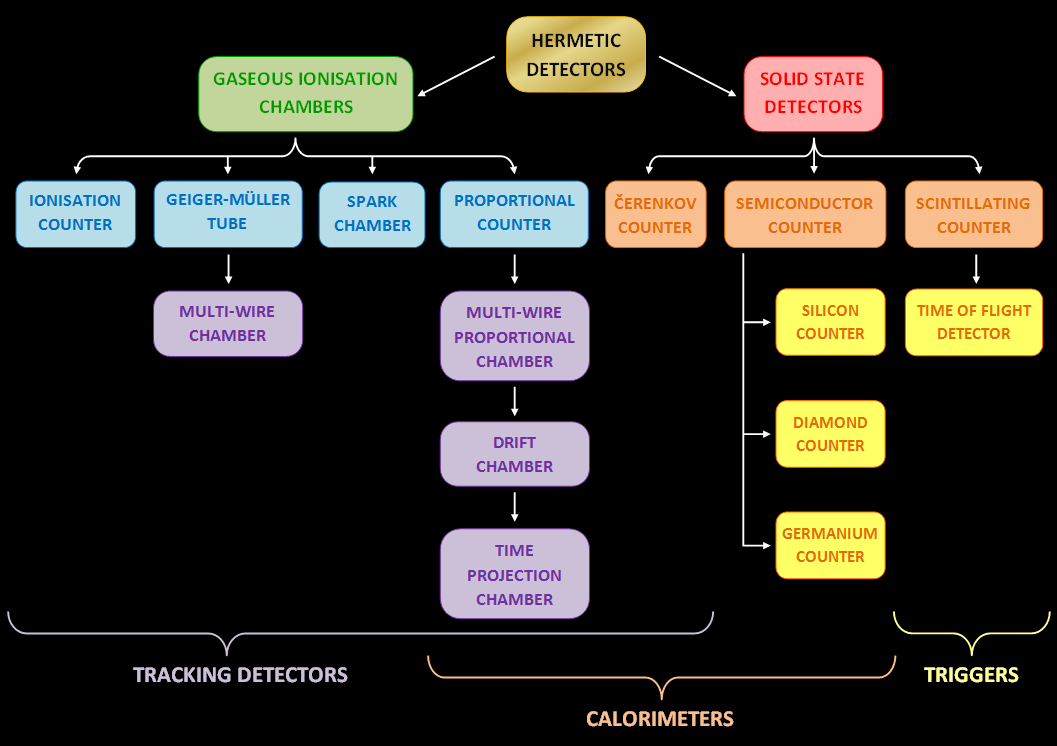|
Journal Of Instrumentation
The ''Journal of Instrumentation'' is an online Peer review, peer-reviewed scientific journal. It is published by IOP Publishing on behalf of the International School for Advanced Studies. The journal covers concept and instrumentation in topic areas related to, and including Accelerator physics, detector and accelerator science, including related theory, numerical simulation, simulations, computer modelling, modelling, and particle accelerator, experimental methods. Abstracting and indexing The journal is abstracted and indexed in: * Scopus * Inspec * Chemical Abstracts Service * INIS Atomindex * NASA Astrophysics Data System * Science Citation Index * Materials Science Citation Index According to the ''Journal Citation Reports'', the journal has a 2020 impact factor of 1.415. Notable articles The journal publishes the complete scientific documentation of the CERN Large Hadron Collider machine and particle detector, detectors. These papers are published as Open access (publi ... [...More Info...] [...Related Items...] OR: [Wikipedia] [Google] [Baidu] |
Instrumentation
Instrumentation a collective term for measuring instruments that are used for indicating, measuring and recording physical quantities. The term has its origins in the art and science of scientific instrument-making. Instrumentation can refer to devices as simple as direct-reading thermometers, or as complex as multi-sensor components of industrial control systems. Today, instruments can be found in laboratories, refineries, factories and vehicles, as well as in everyday household use (e.g., smoke detectors and thermostats) History and development The history of instrumentation can be divided into several phases. Pre-industrial Elements of industrial instrumentation have long histories. Scales for comparing weights and simple pointers to indicate position are ancient technologies. Some of the earliest measurements were of time. One of the oldest water clocks was found in the tomb of the ancient Egyptian pharaoh Amenhotep I, buried around 1500 BCE. Improvements were incorpor ... [...More Info...] [...Related Items...] OR: [Wikipedia] [Google] [Baidu] |
INIS Atomindex
The International Nuclear Information System (INIS) hosts one of the world's largest collections of published information on the peaceful uses of nuclear science and technology. History INIS is based in Vienna, Austria and has been operating since 1970. INIS is operated by the International Atomic Energy Agency in collaboration with 127 Member States and 24 co-operating international organizations. All the content it holds is currently available free to "all Internet users around the world". See also *International Nuclear Event Scale (INES)XZ *List of academic databases and search engines This article contains a representative list of notable databases and search engines useful in an academic setting for finding and accessing articles in academic journals, institutional repositories, archives, or other collections of scientific and ... References External links * INIS Repository search International nuclear energy organizations Bibliographic databases and indexes {{Nuc ... [...More Info...] [...Related Items...] OR: [Wikipedia] [Google] [Baidu] |
Planck Low Frequency Instrument
''Planck'' was a space observatory operated by the European Space Agency (ESA) from 2009 to 2013, which mapped the anisotropies of the cosmic microwave background (CMB) at microwave and infrared frequencies, with high sensitivity and small angular resolution. The mission substantially improved upon observations made by the NASA Wilkinson Microwave Anisotropy Probe (WMAP). ''Planck'' provided a major source of information relevant to several cosmological and astrophysical issues, such as testing theories of the early Universe and the origin of cosmic structure. Since the end of its mission, ''Planck'' has defined the most precise measurements of several key cosmological parameters, including the average density of ordinary matter and dark matter in the Universe and the age of the universe. The project was started around 1996 and was initially called COBRAS/SAMBA: the Cosmic Background Radiation Anisotropy Satellite/Satellite for Measurement of Background Anisotropies. It was la ... [...More Info...] [...Related Items...] OR: [Wikipedia] [Google] [Baidu] |
Technical Report
A technical report (also scientific report) is a document that describes the process, progress, or results of technical or scientific research or the state of a technical or scientific research problem. It might also include recommendations and conclusions of the research. Unlike other scientific literature, such as scientific journals and the proceedings of some academic conferences, technical reports rarely undergo comprehensive independent peer review before publication. They may be considered as grey literature. Where there is a review process, it is often limited to within the originating organization. Similarly, there are no formal publishing procedures for such reports, except where established locally. Description Technical reports are today a major source of scientific and technical information. They are prepared for internal or wider distribution by many organizations, most of which lack the extensive editing and printing facilities of commercial publishers. Technical re ... [...More Info...] [...Related Items...] OR: [Wikipedia] [Google] [Baidu] |
Open Access (publishing)
Open access (OA) is a set of principles and a range of practices through which research outputs are distributed online, free of access charges or other barriers. With open access strictly defined (according to the 2001 definition), or libre open access, barriers to copying or reuse are also reduced or removed by applying an open license for copyright. The main focus of the open access movement is "peer reviewed research literature". Historically, this has centered mainly on print-based academic journals. Whereas non-open access journals cover publishing costs through access tolls such as subscriptions, site licenses or pay-per-view charges, open-access journals are characterised by funding models which do not require the reader to pay to read the journal's contents, relying instead on author fees or on public funding, subsidies and sponsorships. Open access can be applied to all forms of published research output, including peer-reviewed and non peer-reviewed academic journal ... [...More Info...] [...Related Items...] OR: [Wikipedia] [Google] [Baidu] |
Particle Detector
In experimental and applied particle physics, nuclear physics, and nuclear engineering, a particle detector, also known as a radiation detector, is a device used to detect, track, and/or identify ionizing particles, such as those produced by nuclear decay, cosmic radiation, or reactions in a particle accelerator. Detectors can measure the particle energy and other attributes such as momentum, spin, charge, particle type, in addition to merely registering the presence of the particle. Examples and types Many of the detectors invented and used so far are ionization detectors (of which gaseous ionization detectors and semiconductor detectors are most typical) and scintillation detectors; but other, completely different principles have also been applied, like Čerenkov light and transition radiation. Historical examples *Bubble chamber * Wilson cloud chamber (diffusion chamber) * Photographic plate ;Detectors for radiation protection The following types of particle detector ... [...More Info...] [...Related Items...] OR: [Wikipedia] [Google] [Baidu] |
Large Hadron Collider
The Large Hadron Collider (LHC) is the world's largest and highest-energy particle collider. It was built by the European Organization for Nuclear Research (CERN) between 1998 and 2008 in collaboration with over 10,000 scientists and hundreds of universities and laboratories, as well as more than 100 countries. It lies in a tunnel in circumference and as deep as beneath the France–Switzerland border near Geneva. The first collisions were achieved in 2010 at an energy of 3.5 teraelectronvolts (TeV) per beam, about four times the previous world record. After upgrades it reached 6.5 TeV per beam (13 TeV total collision energy). At the end of 2018, it was shut down for three years for further upgrades. The collider has four crossing points where the accelerated particles collide. Seven detectors, each designed to detect different phenomena, are positioned around the crossing points. The LHC primarily collides proton beams, but it can also accelerate beams of heavy ion ... [...More Info...] [...Related Items...] OR: [Wikipedia] [Google] [Baidu] |
CERN
The European Organization for Nuclear Research, known as CERN (; ; ), is an intergovernmental organization that operates the largest particle physics laboratory in the world. Established in 1954, it is based in a northwestern suburb of Geneva, on the France–Switzerland border. It comprises 23 member states, and Israel (admitted in 2013) is currently the only non-European country holding full membership. CERN is an official United Nations General Assembly observer. The acronym CERN is also used to refer to the laboratory; in 2019, it had 2,660 scientific, technical, and administrative staff members, and hosted about 12,400 users from institutions in more than 70 countries. In 2016, CERN generated 49 petabytes of data. CERN's main function is to provide the particle accelerators and other infrastructure needed for high-energy physics research — consequently, numerous experiments have been constructed at CERN through international collaborations. CERN is the site of the ... [...More Info...] [...Related Items...] OR: [Wikipedia] [Google] [Baidu] |
Thomson Reuters
Thomson Reuters Corporation ( ) is a Canadian multinational media conglomerate. The company was founded in Toronto, Ontario, Canada, where it is headquartered at the Bay Adelaide Centre. Thomson Reuters was created by the Thomson Corporation's purchase of the British company Reuters Group in April 2008. It is majority-owned by The Woodbridge Company, a holding company for the Thomson family. History Thomson Corporation The forerunner of the Thomson company was founded by Roy Thomson in 1934 in Ontario, as the publisher of ''The Timmins Daily Press''. In 1953, Thomson acquired the ''Scotsman'' newspaper and moved to Scotland the following year. He consolidated his media position in Scotland in 1957, when he won the franchise for Scottish Television. In 1959, he bought the Kemsley Group, a purchase that eventually gave him control of the '' Sunday Times''. He separately acquired the ''Times'' in 1967. He moved into the airline business in 1965, when he acquired Britanni ... [...More Info...] [...Related Items...] OR: [Wikipedia] [Google] [Baidu] |
Impact Factor
The impact factor (IF) or journal impact factor (JIF) of an academic journal is a scientometric index calculated by Clarivate that reflects the yearly mean number of citations of articles published in the last two years in a given journal, as indexed by Clarivate's Web of Science. As a journal-level metric, it is frequently used as a proxy for the relative importance of a journal within its field; journals with higher impact factor values are given the status of being more important, or carry more prestige in their respective fields, than those with lower values. While frequently used by universities and funding bodies to decide on promotion and research proposals, it has come under attack for distorting good scientific practices. History The impact factor was devised by Eugene Garfield, the founder of the Institute for Scientific Information (ISI) in Philadelphia. Impact factors began to be calculated yearly starting from 1975 for journals listed in the ''Journal Citation Rep ... [...More Info...] [...Related Items...] OR: [Wikipedia] [Google] [Baidu] |
Journal Citation Reports
''Journal Citation Reports'' (''JCR'') is an annual publicationby Clarivate Analytics (previously the intellectual property of Thomson Reuters). It has been integrated with the Web of Science and is accessed from the Web of Science-Core Collections. It provides information about academic journals in the natural sciences and social sciences, including impact factors. The ''JCR'' was originally published as a part of ''Science Citation Index''. Currently, the ''JCR'', as a distinct service, is based on citations compiled from the '' Science Citation Index Expanded'' and the '' Social Sciences Citation Index''.- - - Basic journal information The information given for each journal includes: * the basic bibliographic information of publisher, title abbreviation, language, ISSN * the subject categories (there are 171 such categories in the sciences and 54 in the social sciences) Citation information * Basic citation data: ** the number of articles published during that year and ** ... [...More Info...] [...Related Items...] OR: [Wikipedia] [Google] [Baidu] |





